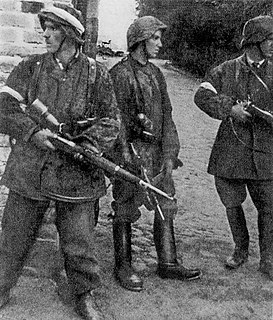 W
WThe 1943 Pinsk Prison raid was one of the most spectacular raids in the history of the Home Army and the Polish Underground State. It took place on 18 January 1943 in Pinsk, the town in Eastern Poland, which at that time was under German occupation as part of Reichskommissariat Ukraine. The purpose of the raid was to release a Cichociemni agent and his comrades, who had been captured by the Germans while trying to blow up the Horyn river bridge.
 W
WAnimal Husbandry is a dice game invented and published by the Polish mathematician Karol Borsuk at his own expense in 1943, during the German occupation of Warsaw. The game was later released as Have You Herd? and Super Farmer.
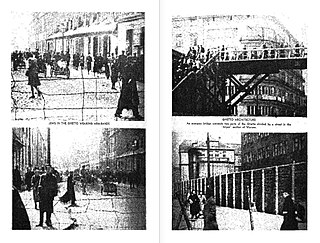 W
WThe Black Book of Polish Jewry is a 400-page report about the progress of the Holocaust in Poland published in 1943 during World War II by the American Federation for Polish Jews in cooperation with the Association of Jewish Refugees and Immigrants from Poland. It was compiled by Jacob Apenszlak with Jacob Kenner, Isaac Lewin and Moses Polakiewicz, and released by Roy Publishers of New York with an introduction by Ignacy Schwarzbart from the National Council of the Polish Republic. The book was sponsored by Eleanor Roosevelt, Albert Einstein, US Senator Robert Wagner, and other high-ranking community leaders. Historian Michael Fleming suggests it downplayed the true scale and manner of the Holocaust in an effort to elicit the empathy of its readership.
 W
WBudy Ossowskie massacre was a mass murder of ethnic Poles carried out on 29–30 August 1943 by a death squad of the Ukrainian Insurgent Army aided by the Ukrainian peasants during the Massacres of Poles in Volhynia and Eastern Galicia. About 290 people were killed, including women and children, all of them, Polish inhabitants of the Budy Ossowskie village, located in the Kowel County of the Wołyń Voivodeship in the Second Polish Republic. Budy Ossowskie village does not exist anymore. It was burned to the ground by the OUN-UPA. The charred remnants of the village were cleared in Soviet Ukraine for grazing cattle. Overall, in the Kowel County some 7,300 ethnic Poles were murdered.
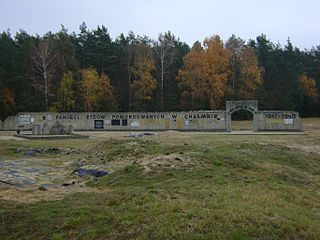 W
WChełmno or Kulmhof was the first of Nazi Germany's extermination camps and was situated 50 kilometres north of Łódź, near the village of Chełmno nad Nerem. Following the invasion of Poland in 1939, Germany annexed the area into the new territory of Reichsgau Wartheland. The camp, which was specifically intended for no other purpose than mass murder, operated from December 8, 1941 to April 11, 1943, parallel to Operation Reinhard during the deadliest phase of the Holocaust, and again from June 23, 1944 to January 18, 1945 during the Soviet counter-offensive. In 1943, modifications were made to the camp's killing methods as the reception building had already been dismantled.
 W
WChrynów massacre was a massacre of Polish worshipers which took place in the Volhynian village of Chrynów, Gmina Grzybowica, Powiat Włodzimierz, Wołyń Voivodeship of the Second Polish Republic. It took place on Sunday, July 11, 1943, when the Ukrainian Insurgent Army (UPA) as well as armed deserters from the Ukrainian Auxiliary Police, supported by local Ukrainian peasants, surrounded the local Roman-Catholic church where the Poles had gathered for a religious ceremony. The parish priest Jan Kotwicki was shot along with a group of women, when attempting to escape through the vestry. During the attack on the village Ukrainians murdered some 150 Poles. A week after these events all buildings in the village and the church were burned down to the ground, and the village ceased to exist.
 W
WThe Częstochowa Ghetto uprising was an insurrection in Poland's Częstochowa Ghetto against German occupational forces during World War II. It took place in late June 1943, resulting in some 2,000 Jews being killed.
 W
WDominopol no longer exists. On July 11, 1943, at the height of the Massacres of Poles in Volhynia, the village was attacked by a death squad of Ukrainian Insurgent Army aided by the Ukrainian peasants, and all ethnic Poles regardless of age and gender were tortured and murdered. Before World War II, Dominopol was a village in the Eastern regions of the Second Polish Republic, located in the Gmina Werba, Powiat Włodzimierz of the Wołyń Voivodeship. The area was invaded by the Soviet Union in 1939 and during Operation Barbarossa annexed by Nazi Germany into Reichskommissariat Ukraine in 1941. The Dominopol location is now in the area of Volodymyr-Volynskyi Raion of the Volyn Oblast in sovereign Ukraine.
 W
WThe ethnic cleansing of Zamojszczyzna by Nazi Germany during World War II was carried out as part of a greater plan of forcible removal of the entire Polish populations from targeted regions of occupied Poland in preparation for the state-sponsored settlement of the ethnic German Volksdeutsche. The operation of mass expulsions from Zamojszczyzna region around the city of Zamość was carried out between November 1942 and March 1943 on direct order from Heinrich Himmler. It was preplanned by both Globocnik from Action Reinhard and Himmler, as the first stage of the eventual murderous ethnic cleansing ahead of projected Germanization of the entire General Government territory.
 W
WGaj massacre was a wartime massacre of the Polish population of Gaj, committed on 30 August 1943 by the Ukrainian Insurgent Army death squad aided by the Ukrainian peasants, in which 600 civilian Poles were killed, including a large number of children. The mass murder operation in Gaj was carried out during the province-wide Massacres of Poles in Volhynia and Eastern Galicia. The settlement founded in the 1920s was burned to the ground by OUN-UPA and no longer exists. When the Polish self-defence unit from nearby Rożyszcze arrived at the Gaj colony a few days later the bodies of victims were strewn everywhere. They identified and shot several Ukrainian collaborators and set their houses of fire in retaliation. The Gaj colony was located in the Kowel County of the Wołyń Voivodeship in the Second Polish Republic.
 W
WAction Ghetto - code name for the armed actions of the Polish Underground State during the Warsaw Ghetto Uprising aimed at helping the insurgents. The name was given to a series of combat actions carried out by the Home Army during the uprising between 19 April 1943 and May 16, 1943.
 W
WGłęboczyca massacre was a mass murder of ethnic Poles carried out on 29 August 1943 by the troops of the Ukrainian Insurgent Army aided by the Ukrainian peasants. It exclusively targeted Polish inhabitants of the Głęboczyca colony, located in the Włodzimierz County of the Wołyń Voivodeship in the Second Polish Republic. About 250 Poles were killed, including 199 known by name including women and children. Głęboczyce does not exist anymore. It was swept from existence during the Massacres of Poles in Volhynia and Eastern Galicia, along with the neighbouring settlement of Ostrówek in powiat Luboml.
 W
WGurów massacre was a wartime massacre of the Polish population of Gurów, committed on 11 July 1943 by the Ukrainian Insurgent Army death squad from Group "Piwnicz" and Ukrainian peasants, during the Massacres of Poles in Volhynia and Eastern Galicia. The crime scene was the prewar village of Gurów located in Gmina Grzybowica, Powiat Włodzimierz in the Wołyń Voivodeship of the Second Polish Republic. Gurów village no longer exists.
 W
WHurby massacre was a mass murder of the Polish population of the Hurby village, perpetrated on June 2, 1943, by a death squad of the Ukrainian Insurgent Army (UPA) and so-called brushwood self defence commando made up of Ukrainian peasants, during the province-wide Massacres of Poles in Volhynia and Eastern Galicia in World War II. Hurby belonged to the Second Polish Republic before the war began. It used to be located in the powiat Zdobłunowski of the Wołyń Voivodeship. It is now a valley by the same name in western Ukraine. About 250 Poles were murdered in the attack, which was confirmed by the UPA commander for Volyn, Dmytro Klyachkivsky, who said in his communique of June 1943 that Hurby "went up in smoke".
 W
WThe Janowa Dolina massacre took place on 23 April 1943 in the village of Janowa Dolina, during the occupation of Poland in World War II. Before the Nazi-Soviet invasion of the Polish Second Republic, Janowa Dolina was a model settlement built in the Kostopol County of the Wołyń Voivodeship by workers of the Polish State Basalt Quarry. The town was inhabited by 2,500 people. Its name, which translates as the "Jan's Valley" in Polish, came from the Polish king Jan Kazimierz, who reportedly hunted in the Volhynian forests, and after hunting — rested on the shore of the Horyń (Horyn) River. The town was destroyed during World War II by Ukrainian nationalists who murdered most of its Polish population including women and children.
 W
WThe Kielce cemetery massacre refers to the shooting action by the Nazi German police that took place on May 23, 1943 in occupied Poland during World War II, in which 45 Jewish children who had survived the Kielce Ghetto liquidation, and remained with their working parents at the Kielce forced-labour camps, were rounded up and brought to the Pakosz cemetery in Kielce, Poland, where they were murdered by the German paramilitary police. The children ranged in age from 15 months to 15 years old.
 W
WKisielin massacre was a massacre of Polish worshipers which took place in the Volhynian village of Kisielin, now Kysylyn, located in the Volyn Oblast, Ukraine. It took place on Sunday, July 11, 1943, when units of the Ukrainian Insurgent Army (UPA), supported by local Ukrainian peasants, surrounded Poles who had gathered for a ceremony at a local Roman-Catholic church. Around 60 to 90 persons or more, men, women and children – were ordered to take off their clothes and were then massacred by machine gun. The wounded were killed with weapons such as axes and knives. Those who survived escaped to the presbytery and barricaded themselves for eleven hours.
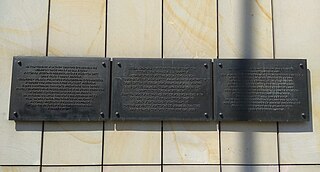 W
WThe Lipowa 7 camp was a Nazi forced labor concentration camp, primarily for Jews, by Lipowa Street in Lublin, Poland during December 1939 - 1944. In November 1943 nearly all Jewish inmates were exterminated.
 W
WThe Lublin airfield camp was a Nazi forced labor concentration camp, primarily for Jews, at the airfield in Lublin, Poland during 1942–1943, with its prehistory starting from 1939. It also employed and detained (non-Jewish) Polish women. It is also referred to as "(Lublin) airstrip camp", "Flugplatz labor camp", "Alter Flugplatz lager", etc.
 W
WMajdanek was a Nazi concentration and extermination camp built and operated by the SS on the outskirts of the city of Lublin during the German occupation of Poland in World War II. It had seven gas chambers, two wooden gallows, and some 227 structures in all, placing it among the largest of Nazi-run concentration camps. Although initially intended for forced labor rather than extermination, the camp was used to kill people on an industrial scale during Operation Reinhard, the German plan to murder all Jews within their own General Government territory of Poland. The camp, which operated from October 1, 1941, until July 22, 1944, was captured nearly intact, because the rapid advance of the Soviet Red Army during Operation Bagration prevented the SS from destroying most of its infrastructure, and the inept Deputy Camp Commandant Anton Thernes failed in his task of removing incriminating evidence of war crimes.
 W
WThe Sobibór Museum or the Museum of the Former Sobibór Nazi Death Camp, is a Polish state-owned museum devoted to memorializing the victims and atrocities committed at the former Sobibor extermination camp, located on the outskirts of Sobibór near Lublin. The Nazi German death camp was set up in occupied Poland during World War II, as part of the Jewish extermination program known as the Operation Reinhard, which marked the most deadly phase of the Holocaust in Poland. The camp was run by the SS Sonderkommando Sobibor, initially commanded by Franz Stangl. The number of Jews from Poland and elsewhere who were gassed and cremated there between April 1942 and October 14, 1943 is estimated at 250,000; possibly more, including those who were transported from other Reich-occupied countries.
 W
WThe massacres of Poles in Volhynia and Eastern Galicia, were carried out in German-occupied Poland by the Ukrainian Insurgent Army, or the UPA, with the support of parts of the local Ukrainian population against the Polish minority in Volhynia, Eastern Galicia, parts of Polesia and Lublin region from 1943 to 1945. The peak of the massacres took place in July and August 1943. Most of the victims were women and children. Many of the Polish victims regardless of age or gender were tortured before being killed; some of the methods included rape, dismemberment or immolation, among others. The UPA's actions resulted in between 50,000 and 100,000 deaths.
 W
WThe Michniów massacre occurred on 12–13 July 1943 in the village of Michniów during German occupation of Poland when approximately 204 of its inhabitants, including women and children, were massacred by a German Ordnungspolizei, SS.
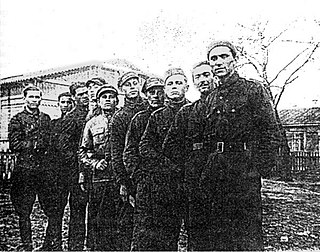 W
WThe Naliboki massacre was the 8 May 1943 mass killing of 129 Poles, including women and children, by Soviet partisans in the small town of Naliboki in German-occupied Poland.
 W
WThe Operation Arsenal, code name: "Meksyk II" was the first major operation by the Gray Ranks, Polish Underground formation during the Nazi German occupation of Poland. It took place on March 26, 1943 in Warsaw. Its name was coined after the Warsaw Arsenal, in front of which the action took place. The plan was to free the troop leader Jan Bytnar "Rudy", who was arrested together with his father by the Gestapo. The operation was executed by 28 scouts led by Warsaw Standard Commander Stanisław Broniewski "Orsza". The initiator and the commander of the "Attack Group" was Tadeusz Zawadzki "Zośka".
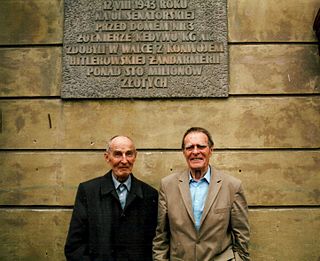 W
WOperation Góral was an action carried out by the Polish anti-Nazi resistance organization Home Army, which involved a heist of over a million US dollars' worth of currency being transported by Nazi German authorities on 12 August 1943. It was carried out in the center of Warsaw by a unit of Kedyw, "Motor", which seized a transport car carrying the money. It was one of the best organized actions of the Polish underground during the German occupation, and it took only two minutes.
 W
WOperation Harvest Festival was the murder of up to 43,000 Jews at the Majdanek, Poniatowa and Trawniki concentration camps by the SS, the Order Police battalions, and the Ukrainian Sonderdienst on 3–4 November 1943.
 W
WMassacre of Ostrówki refers to the mass murder of the Polish inhabitants of the Volhynian village of Ostrówki, located during the interbellum in the gmina Hushcha, Liuboml, Volhynian Voivodeship of the Second Polish Republic, now known as Ostrowky, located in the Manevychi Raion of Volyn, Ukraine. On 30 August 1943, armed members of the Ukrainian Insurgent Army (UIA) murdered 438 Poles. Among the victims were 246 children under the age of 14.
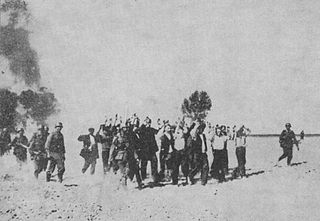 W
WThe pacification actions in German-occupied Poland during World War II were one of many punitive measures designed to inflict terror on the civilian population of local villages and towns with the use of military and police force. They were an integral part of the war of aggression against the Polish nation waged by Nazi Germany since September 1, 1939. The projected goal of pacification operations was to prevent and suppress the Polish resistance movement in World War II nevertheless, among the victims were children as young as 1.5 years old, women, fathers attempting to save their families, farmers rushing to rescue livestock from burning buildings, patients, victims already wounded, and hostages of many ethnicities including Poles and Jews.
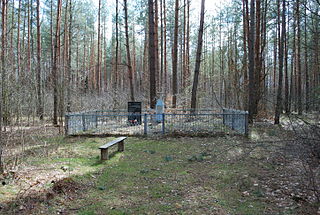 W
WThe Parośla I massacre was committed during World War II by the Ukrainian Insurgent Army (UPA) under the command of Hryhorij Perehijniak "Dowbeszka-Korobka" on 9 February 1943 against the ethnic Polish residents of the village of Parośla in the Nazi-controlled Reichskommissariat Ukraine. It is considered a prelude to the ethnic cleansing of Poles in the Volhynia region by the UPA, and is recognized as the first mass murder committed by the Ukrainian Insurgent Army in the area. Estimates of the number of victims range from 149 to 173.
 W
WWitold's Report, also known as Pilecki's Report, is a report about the Auschwitz concentration camp written in 1943 by Witold Pilecki, a Polish military officer and member of the Polish resistance. Pilecki volunteered in 1940 to be imprisoned in Auschwitz to organize a resistance movement and send out information about the camp. He escaped from Auschwitz in April 1943. His was the first comprehensive record of a Holocaust death camp to be obtained by the Allies.
 W
WThe Posen speeches were two speeches made by Heinrich Himmler, the head of the SS of Nazi Germany, on 4 and 6 October 1943 in the town hall of Posen (Poznań), in German-occupied Poland. The recordings are the first known documents in which a member of the Hitler Cabinet spoke of the ongoing extermination of the Jews in extermination camps. They demonstrate that the German government wanted, planned and carried out the Holocaust.
 W
WSobibor was an extermination camp built and operated by Nazi Germany as part of Operation Reinhard. It was located in the forest near the village of Sobibór in the General Government region of German-occupied Poland.
 W
WThe Sochy massacre occurred on 1 June 1943 in the village of Sochy, Lublin Voivodeship in Zamość County, Lublin Voivodeship during German occupation of Poland when approximately 181–200 of its inhabitants, including women and children, were massacred by the German Ordnungspolizei and SS in retaliation for the village’s support for the Polish resistance movement.
 W
WPoniatowa concentration camp in the town of Poniatowa in occupied Poland, 36 kilometres (22 mi) west of Lublin, was established by the SS in the latter half of 1941 initially, to hold Soviet prisoners of war following Operation Barbarossa. By mid-1942, about 20,000 Soviet POWs had perished there from hunger, disease and executions. The camp was known at that time as the Stalag 359 Poniatowa. Afterwards, the Stammlager was redesigned an expanded as a concentration camp to provide slave labour supporting the German war effort, with workshops run by the SS Ostindustrie (Osti) on the grounds of the prewar Polish telecommunications equipment factory founded in the late 1930s. Poniatowa became part of the Majdanek concentration camp system of subcamps in the early autumn of 1943. The wholesale massacre of its mostly Jewish workforce took place during the Aktion Erntefest, thus concluding the Operation Reinhard in General Government.
 W
WTrawniki men were Central and Eastern European collaborators recruited from prisoner-of-war camps set up by Nazi Germany for Soviet Red Army soldiers captured in the border regions during Operation Barbarossa launched in June 1941. Thousands of these volunteers served in the General Government territory of German-occupied Poland until the end of World War II. Trawnikis belonged to a category of Hiwis, Nazi auxiliary forces recruited from native subjects.
 W
WTreblinka was an extermination camp, built and operated by Nazi Germany in occupied Poland during World War II. It was in a forest north-east of Warsaw, 4 kilometres (2.5 mi) south of the village of Treblinka in what is now the Masovian Voivodeship. The camp operated between 23 July 1942 and 19 October 1943 as part of Operation Reinhard, the deadliest phase of the Final Solution. During this time, it is estimated that between 700,000 and 900,000 Jews were killed in its gas chambers, along with 2,000 Romani people. More Jews were killed at Treblinka than at any other Nazi extermination camp apart from Auschwitz-Birkenau.
 W
WThe Warsaw Ghetto Uprising was the 1943 act of Jewish resistance in the Warsaw Ghetto in German-occupied Poland during World War II to oppose Nazi Germany's final effort to transport the remaining ghetto population to Majdanek and Treblinka death camps.
 W
WMassacre of Wola Ostrowiecka was a 1943 mass murder of Polish inhabitants of the village of Wola Ostrowiecka located in the prewar gmina Huszcza in Luboml County of the Volhynian Voivodeship, within the Second Polish Republic. Wola Ostrowiecka no longer exists. It was burned to the ground during the Massacres of Poles in Volhynia and Eastern Galicia.
 W
WZagaje massacre was a mass murder of ethnic Poles carried out on 11–12 July 1943 by the troops of the Ukrainian Insurgent Army group "Piwnicz", aided by the Ukrainian peasants, during the Massacres of Poles in Volhynia and Eastern Galicia. Approximately 260–350 people were killed, including women and children. The village Zagaje was levelled out and does not exist anymore. It was located in the gmina Podberezie of the Horochów County in the Wołyń Voivodeship of the Second Polish Republic. Overall, in the Horochów County some 4,200 ethnic Poles were murdered, in nearly hundreds of separate locations before the end of the Polish-Ukrainian conflict. The village Zagaje is not to be confused with the Zagaje colony, located in gmina Czaruków, powiat Łuck, of the same voivodeship.
 W
W